The Irish Wake: Exploring the Rich Traditions of Life and Death Celebrations
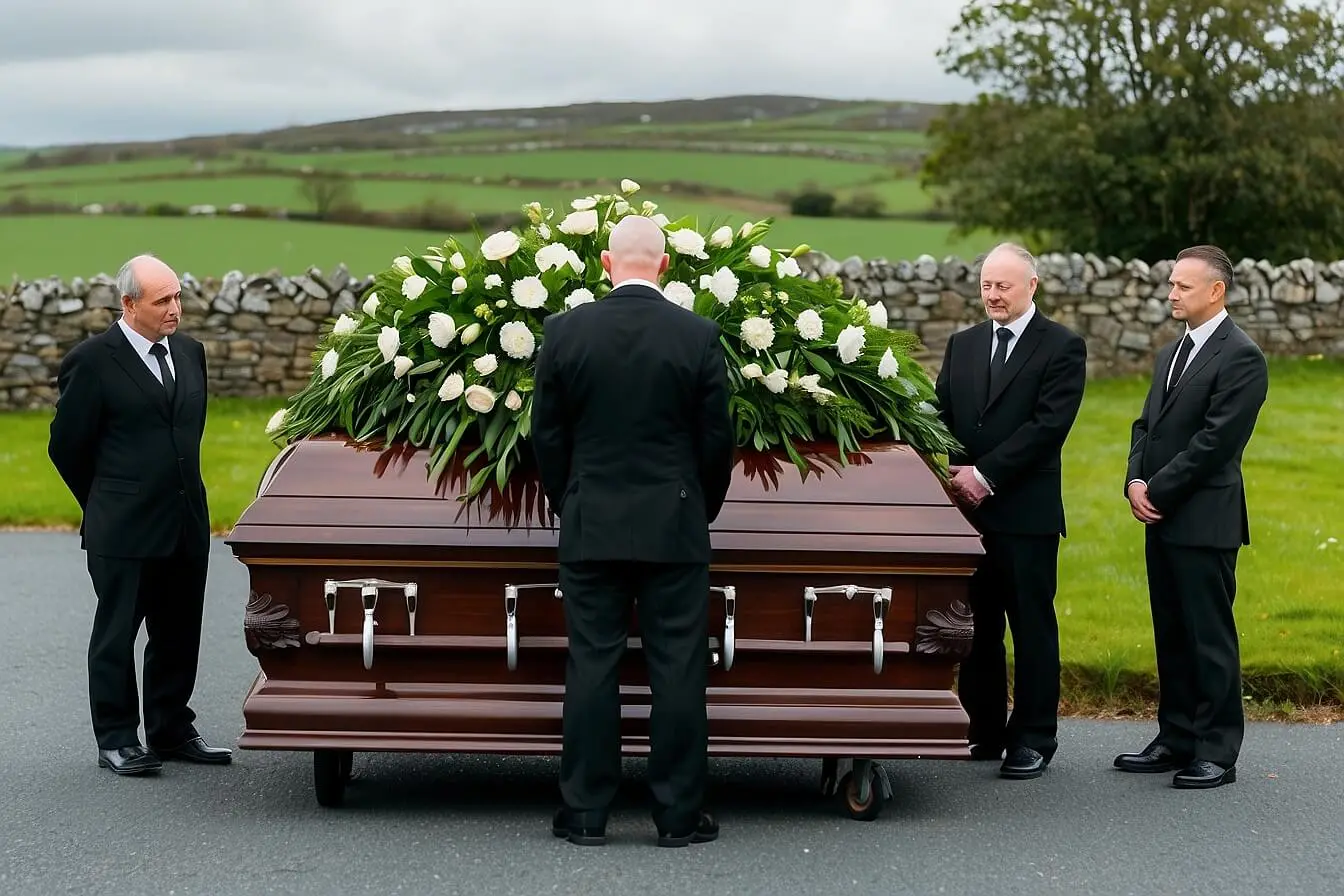
Updated On: April 23, 2024 by Yasmin Elwan
In the tapestry of Irish cultural practices, the Irish wake stands out as a poignant amalgamation of life affirmation and reverent mourning. An Irish wake is traditionally a time when family, friends, and the community gather to honour the life of the deceased and offer support to one another in the grieving process.
This custom is imbued with a rich array of rituals and symbols that capture the essence of both celebration and sorrow. These ceremonies have their roots deeply set in history and have evolved through the ages, balancing the need to mourn with the impulse to celebrate the life that was lived.
Marking the passage from life to death, the wake serves as a rite of passage not just for the departed but also for the bereaved, facilitating the transition through the grieving process. Wake customs may include symbolic acts and superstitions that hold unique meanings within the cultural context.
The ceremonial aspects, such as keening and storytelling, reflect the community’s collective consciousness and emphasise the importance of remembrance and oral tradition. The Irish wake, though it may appear to have been modified over time, still retains its core significance and continues to be observed across the world wherever Irish heritage is cherished.
History and Origins of the Irish Wake
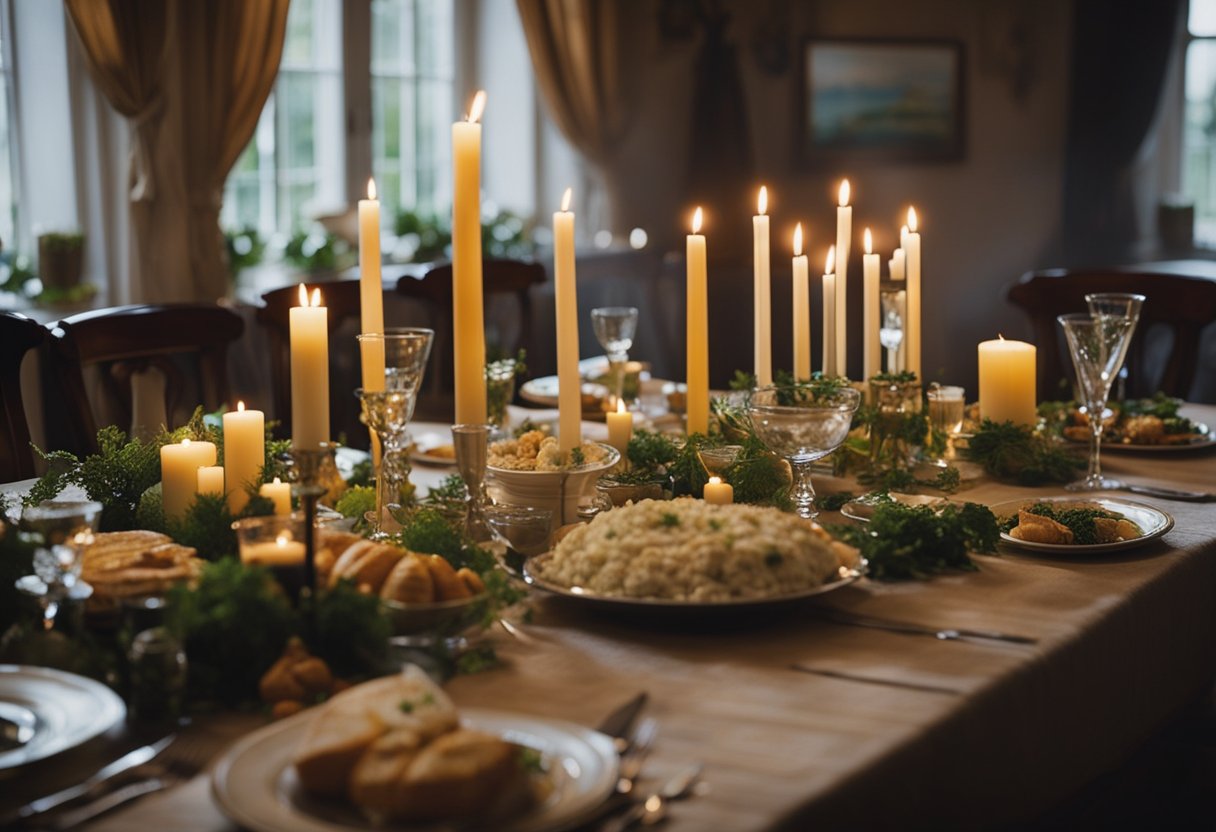
The Irish wake is a practice steeped in deep history, bonding the present with past traditions and beliefs of both ancient Celtic rituals and Christian influences.
Ancient Traditions
The origins of the Irish wake can be traced back to ancient times. It embodies elements of pre-Christian Irish customs, where it was believed that a proper send-off was necessary to ensure the deceased’s safe passage to the afterlife. This often involved the community gathering to keep watch over their loved one, sharing stories, food, and tributes in their honour.
Influence of Christianity
As Christianity took root in Ireland, these traditional practices were incorporated into Catholic rituals. The wake became a space where liturgical prayers intermingled with local customs—creating a ceremony that honoured both the Christian faith and ancient Irish history. This includes similarities with ancient Jewish customs, such as the act of watching over the deceased.
Modern Evolution
In contemporary times, while the core elements of the wake have been preserved, there have been noticeable shifts. Our wakes not only embody the duty of mourning but also encompass the celebration of the departed’s life. The traditional wake has adapted, but it continues to play a vital role in Irish culture, symbolising the enduring spirit of our community and respect for the passing of life.
Cultural Significance

The Irish wake holds profound cultural significance, weaving together strands of Irish culture, community support, and cherished relationships between family and friends. Our section delves into the intricacies of this tradition, focussing on mourning practices and community participation.
Irish Culture and Mourning
The Irish wake is a cornerstone of Irish culture, acting as a bridge between the living and the deceased. This tradition underscores our cultural approach to death, offering a unique blend of sorrow and celebration. It provides an opportunity for families and friends to gather and share memories, reflecting on the life of the loved one who has passed. The wake functions not merely as a farewell but as a testament to the interwoven nature of life and death within our cultural fabric.
Community Involvement
In Irish communities, wakes are emblematic of the inherent community aspect of mourning. They encapsulate the spirit of togetherness as neighbours and friends come together to support the bereaved family. The presence of the community offers a sense of solidarity, shared comfort, and collective grieving that is central to the healing process. This communal involvement reaffirms our cultural belief that mourning is a shared experience, reinforcing the bonds that tie us together.
In approaching death, we do so with the full force of our community, upholding the belief that no one should face loss alone. This practice reinforces the unity and strength of our social fabric, demonstrating an unwavering commitment to one another in times of need.
Rituals and Ceremonies
As we explore the Irish wake, we find that it is a unique blend of solemnity and celebration, characterised by specific rituals and ceremonies integral to this cultural tradition.
The Vigil
The vigil serves as an opportunity for family and friends to gather and watch over the deceased in the lead-up to the funeral. This is a time for shared reminiscence and support, often taking place in the home of the deceased. Mirrors in the house may be covered as a sign of respect and to focus attention solely on the departed.
Preparation of the Body
In preparing the body, we see the departed dressed in their finest clothes, lying in repose, often in an open casket. This task is usually carried out by close family members with great care, ensuring the deceased is presented respectfully for those who come to pay their final respects.
Rosary and Prayers
Traditionally, the Catholic Church plays a central role in the rituals of an Irish wake, with the recitation of the Rosary a common practice. Prayers are said to honour the deceased and provide comfort to the bereaved, reflecting the underlying religious ethos that often permeates the ceremony.
Symbolic Acts and Superstitions
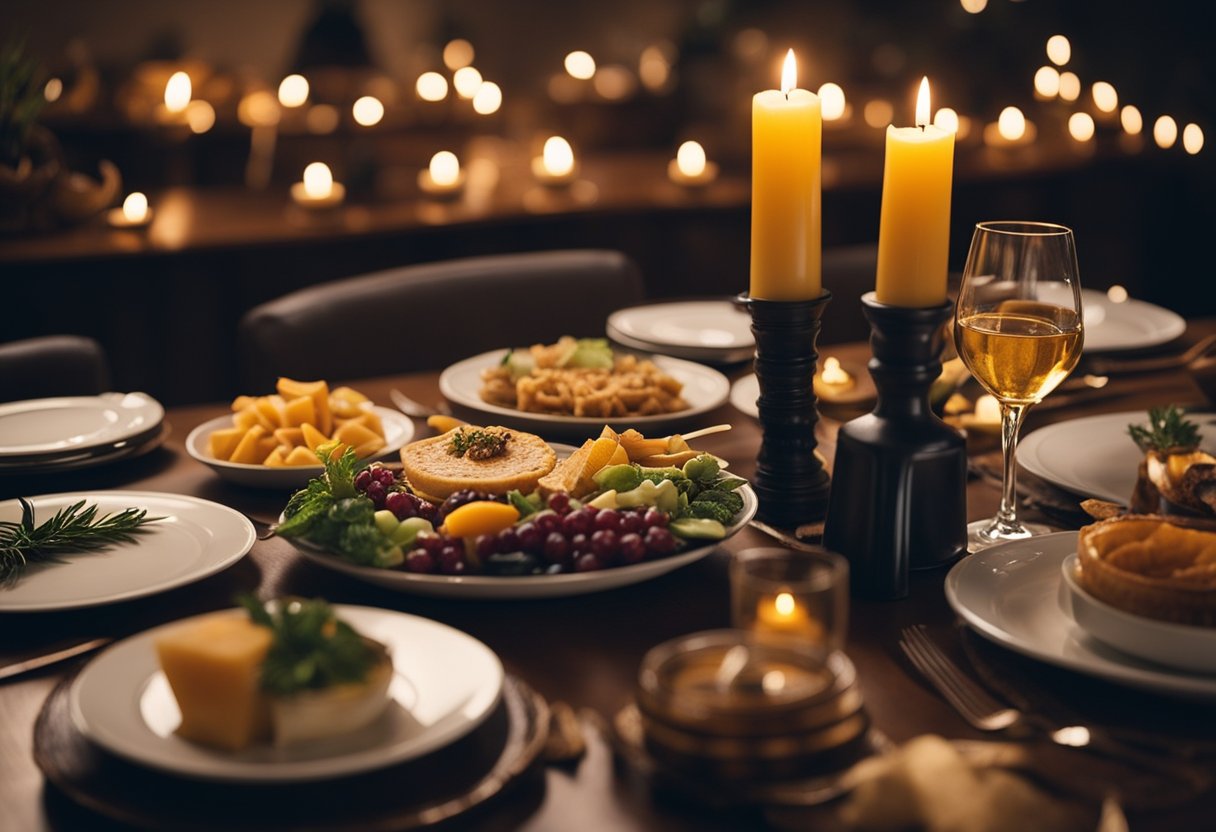
In the rich tapestry of Irish wake traditions, certain practices steeped in symbolism and old beliefs stand out for their poignancy and purpose. We find these actions deeply ingrained in the cultural response to death, each element carrying its own meaning and serving a specific role in the wake.
Covering the Mirrors
One of the most visual signs of a home in mourning is the act of covering the mirrors. It’s believed that mirrors are covered to prevent the reflection of the deceased, which is thought to trap their soul. This practice also symbolically marks a period of reflection and introspection for the bereaved, turning attention away from oneself to focus on the loved one who has passed.
Stopping Clocks
At the exact time of death, clocks in the home are traditionally stopped. This act symbolises the cessation of time for the deceased and serves as a mark of respect. It also represents a pause in the lives of the mourners, acknowledging the moment of a significant change and honouring the person who has died.
Protection from Spirits
The Irish wake also includes measures to ensure protection from spirits. It was widely believed that evil spirits would attempt to claim the soul of the deceased, so various rituals were performed to safeguard them. One such measure was to hold a wake over the course of several nights to keep watch and protect the deceased’s body from any malevolent entities that might be lurking.
Our observance and recount of these acts and superstitions allow us to appreciate the depth of tradition that goes into honouring those who have passed, making the Irish wake a poignant blend of celebration and sombreness.
Wake Customs
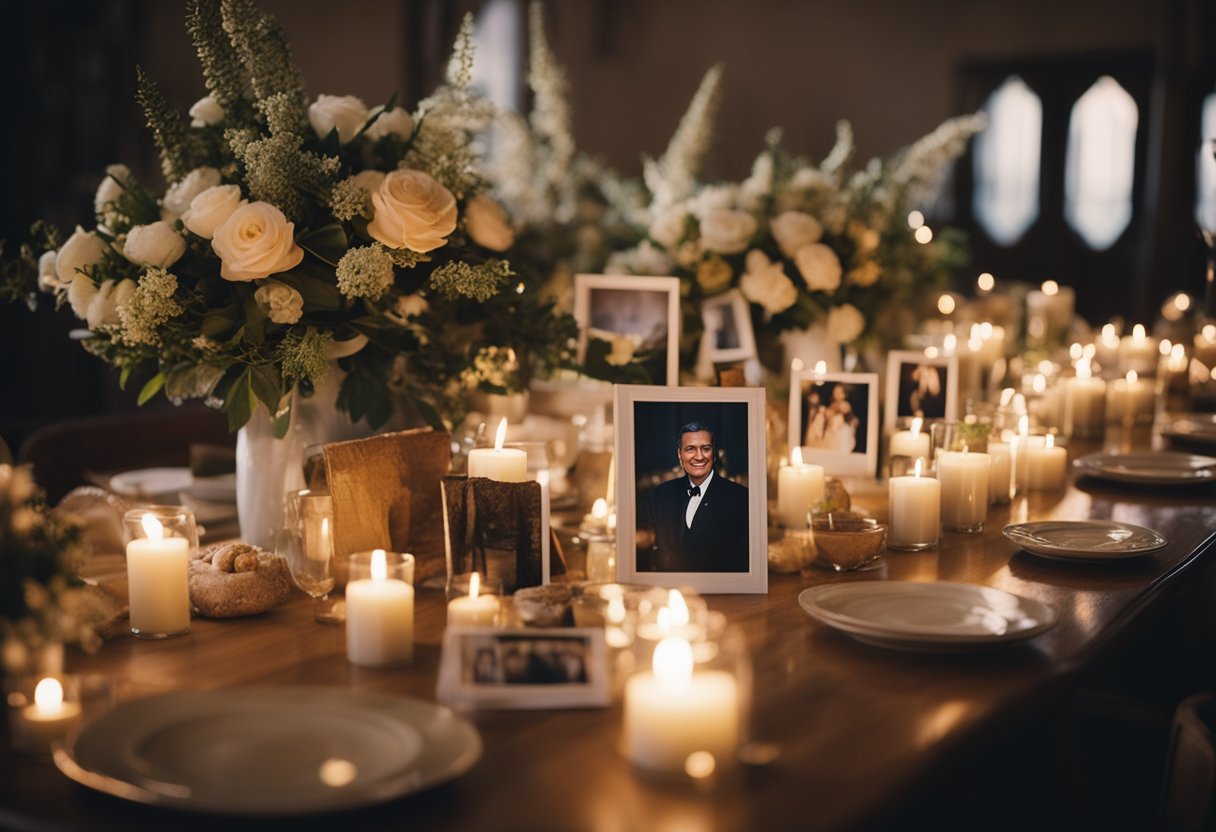
When we attend an Irish wake, we partake in a rich tapestry of customs that blend mourning with celebration, reflecting the Irish approach to death as a part of life’s continuum.
Food and Drink
At the heart of an Irish wake, you’ll find a table laden with food and drinks, sustaining the gathered community. Traditional fare often includes a selection of sandwiches, pies, and cakes alongside tea and stronger beverages. It’s common to see the table constantly replenished, as hospitality remains a cornerstone of the wake.
Music and Songs
The air at a wake is often filled with music and songs that tell stories of the deceased’s life or of Ireland’s past. Ballads and laments may give way to more upbeat tunes as the night progresses, symbolising the transition from sorrow to the celebration of a life well-lived.
Storytelling and Humour
Storytelling and humour are integral to an Irish wake, as tales are shared that evoke laughter and tears in equal measure. The stories celebrate the deceased’s personality and deeds, often highlighting their quirks with a spirit of affectionate teasing.
The Purpose and Process of Keening
In the tradition of Irish wakes, keening has been a poignant expression of mourning. We understand that keening is a form of vocal lamentation performed by women, known as keeners, who mourn the deceased through wails and improvised verse. This ritual is steeped in emotion and cultural heritage, acting as an outlet for the communal grief of those gathered.
The process typically involves the following:
- Preparation: Keeners, often professional mourners, ready themselves to perform at the wake.
- Performance: They stand near the deceased, singing and wailing in a haunting, melodic manner.
- Lyrics: Verses can be a combination of Irish and English, mixing both improvised and traditional elements.
- Physical Expression: It can be quite physical, with keeners sometimes swaying or gesturing.
The purpose of keening is multifaceted:
- To honour the person who has passed away
- To express the depth of communal sorrow
- To help the living process their grief
- To connect the community with their ancestral rituals
Despite its historical significance, keening is a tradition that has waned in modern times, yet it remains a poignant reminder of Ireland’s rich cultural tapestry of grieving and remembrance. Our engagement with these practices provides us with a profound insight into the Irish way of honouring life and death.
The Funeral: From Wake to Burial
Following an Irish wake, which is replete with prayers, music, and remembrance, the subsequent stages of a traditional Irish funeral connect heritage with the solemn respect for the departed. We navigate through the final journey of a loved one with a sequence of meaningful rituals, culminating in their final resting place.
Procession to the Church
On the day of the funeral, a procession forms usually from the home of the deceased or the funeral home to the church. A hearse leads, bearing the casket or coffin, followed by family and friends. This sombre march is a public mark of respect and sorrow, a collective embrace of the family by the community.
The Funeral Mass
At the church, a Funeral Mass, deeply rooted in Irish Catholic tradition, takes place. This service features readings from the Bible, heartfelt eulogies, and hymns often drawn from traditional Irish folklore. The funeral integrates both grief and the celebration of the person’s life, underpinning the ceremony with a sense of hope and continuity.
Burial Rites
Following the Mass, the cortege proceeds to the graveyard. The burial is typically in a family plot, where the deceased is laid to rest alongside their ancestors. Closing prayers are said, and soil is cast upon the coffin—a poignant symbol of our origins and finality. It is here, at the graveside, that our farewells are whispered, our memories cherished, and promises to keep the spirit of the deceased alive in our hearts are made.
Memorial and Aftermath
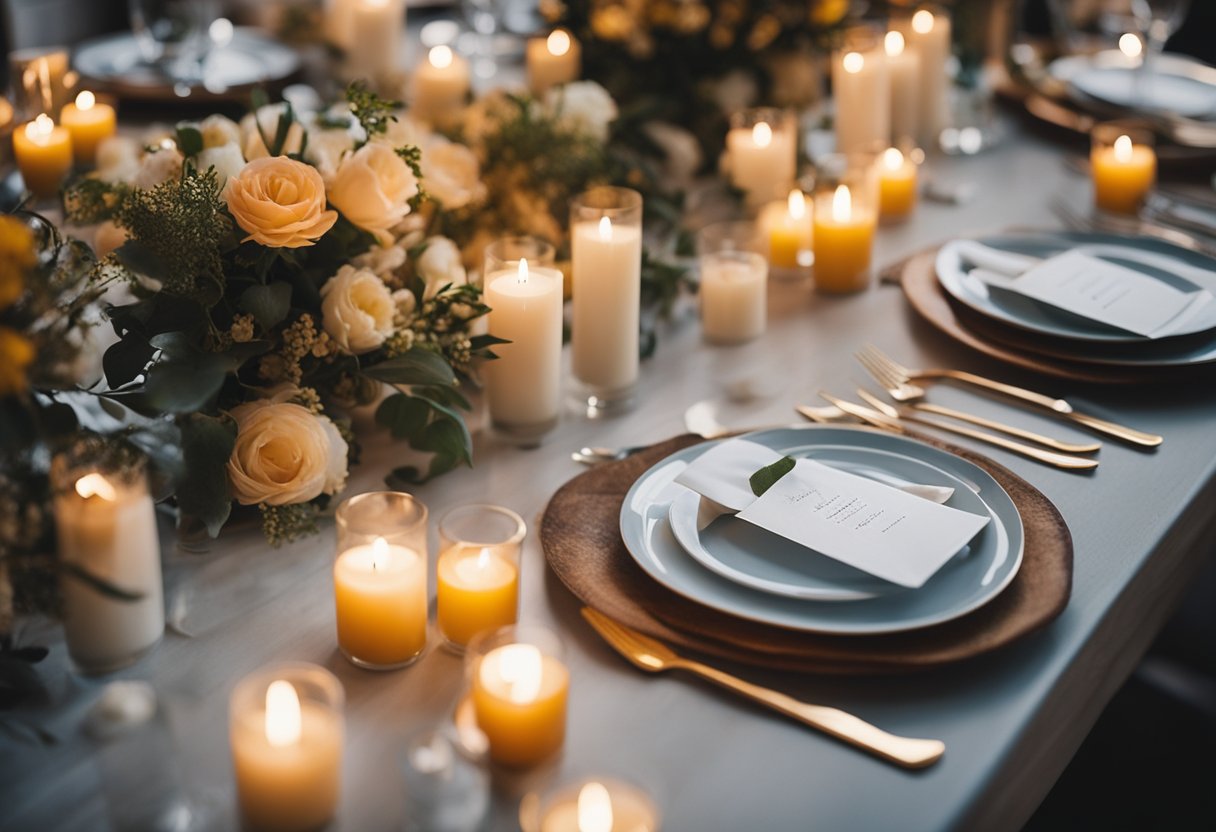
In the aftermath of an Irish wake, the focus shifts to immortalising the memory of the deceased and offering solace to the grieving. Here, we recount the importance of memorial tributes and the provision of support to those left behind.
Remembrance and Tributes
After the wake, remembrance takes on a tangible form, often through memorials that honour the person’s life. Tributes can range from a display of flowers to personalised anecdotes shared among friends and family. It is a time to celebrate life through stories and memories that capture the essence of the loved one’s spirit.
- Flowers: Traditionally chosen for their symbolism, flowers like lilies represent the soul’s movement towards peace.
- Eulogies: Delivered by close acquaintances, they articulate the impact of the departed on their community.
Support and Comfort
The provision of comfort in the wake’s aftermath is essential in fostering a collective healing process.
- Community Support: The network of family and friends converges to offer comfort through shared mourning and assistance with practical arrangements.
- Grief Support: Informal gatherings may continue, serving both to commemorate the departed and to provide a space for shared comfort.
In remembering those we’ve lost, we turn to enduring symbols and gestures of remembrance to ensure their legacies live on, while also supporting one another through the journey of grief.
Modern Irish Wakes and Adaptations
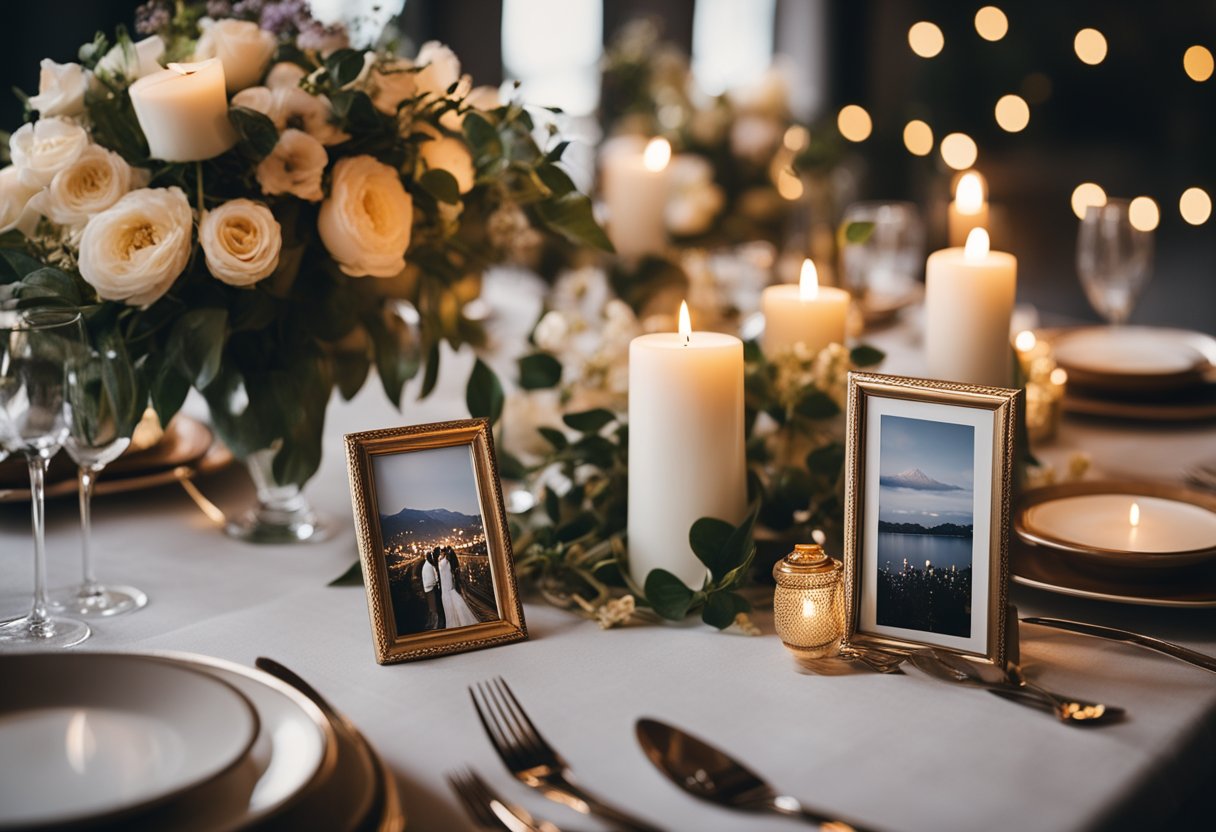
In the context of evolving traditions and the melding of cultures, modern Irish wakes have adapted to contemporary times while retaining their fundamental essence as a celebration of life and commemoration of death.
Contemporary Practices
At modern wakes, funeral homes often become the venues where family and friends gather. The ritual typically maintains core elements such as the presence of an open casket and the sharing of stories and music, yet nowadays, it’s not uncommon to see multimedia displays, such as tribute videos, that celebrate the deceased’s life. This shift includes a blend of traditional elements with modern technology. It’s not unusual for attendees to express condolences via online memorial pages provided by the funeral home. The incorporation of these practices allows for a more inclusive experience, enabling those who may not be able to attend in person to be part of the remembrance.
Influence of Other Cultures
In the changing landscape of cultural practices, Irish wakes have also absorbed influences from other cultures, which is evident in the diverse ways people now choose to memorialise their loved ones. For example, some have adopted the custom of sharing favourite foods of the deceased, reminiscent of the celebratory repasts found in other traditions. Additionally, the wake and subsequent funeral often feature a melding of both religious and secular sentiments, accommodating varied beliefs and personal preferences. This adaptation underscores the wake’s enduring relevance in a multicultural society.
Wake Etiquette
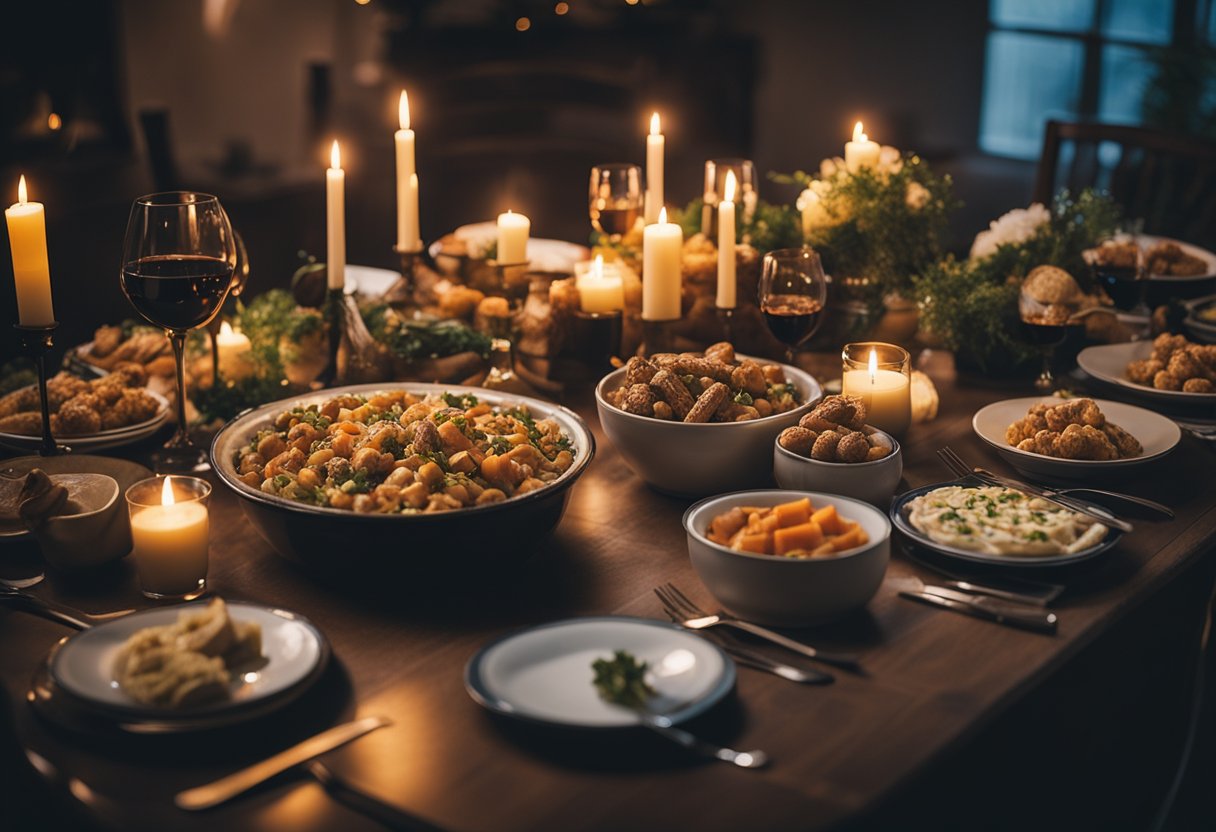
When attending a wake at the home of the deceased, it is vital to first understand the customs and practices that are expected of guests. The Irish wake is a unique tradition that should be approached with respect and sensitivity.
- Attire: Traditionally, dark clothing is worn to signal mourning; however, respect for the family’s wishes takes precedence should they suggest otherwise.
- Arrival: Upon arrival, it’s customary to greet the family first. Express your condolences with sincerity, keeping your words simple and heartfelt.
- Bringing a gift:
- Flowers are a common token of sympathy, but some may prefer a charitable donation instead.
- Food items are also appreciated, as they help sustain the family and other guests.
- Paying respects:
- Approach the open casket, if present, to pay your respects; a moment of reflection or a silent prayer is customary.
- It’s important to read the room and follow any cues from other guests or the family.
- Behaviour:
- Maintain a composed demeanour; sharing fond memories of the deceased is welcome, but the tone should remain respectful.
- The wake is both a solemn occasion and a celebration of life, so balance your interactions accordingly.
We must remember that an Irish wake is deeply personal, reflecting both the life of the person who has passed and the community’s spirit. Mind your manners and embrace the customs as we come together in our shared humanity to support one another during this time of loss.
Frequently Asked Questions
In addressing common inquiries about the Irish wake, we aim to shed light on the traditions and customs that reflect both a celebration of life and an acknowledgement of death.
What customs are observed at a traditional Irish wake?
At a traditional Irish wake, family and friends gather around the deceased, who is often laid out at home in an open casket. This vigil may last for a few days and typically includes prayers, the recitation of the Rosary, and sharing memories.
What traditions are involved in modern Irish wakes?
Modern Irish wakes still retain many age-old customs, merging them with contemporary practices. While the wake remains a social gathering to honour the deceased, modern elements can include celebratory storytelling and multimedia presentations commemorating the life of the loved one.
What attire is appropriate for attendees of an Irish wake?
Appropriate attire for an Irish wake is generally subdued and respectful; dark, sombre colours are typically worn. This reflects the solemnity of the occasion and out of respect for the family of the deceased.
How do Irish drinking customs feature in the wake?
Drinking at an Irish wake serves two purposes: it’s a toast to the life of the deceased and a means for the bereaved to find some comfort. Sharing a drink can be an integral part of the grieving process, symbolizing the communal support within the gathering.
What are common superstitions associated with Irish funerals?
Irish funerals and wakes are woven with superstitions. For instance, mirrors may be covered to prevent the deceased’s spirit from getting trapped. There’s also a tradition of stopping clocks at the time of death to ward off bad luck for the family.
How do you appropriately express condolences at an Irish wake?
Expressing condolences at an Irish wake is typically done with a simple handshake, hug, or kind words to the family. It is our custom to speak directly and sincerely, often sharing a fond memory of the person who has passed away.






